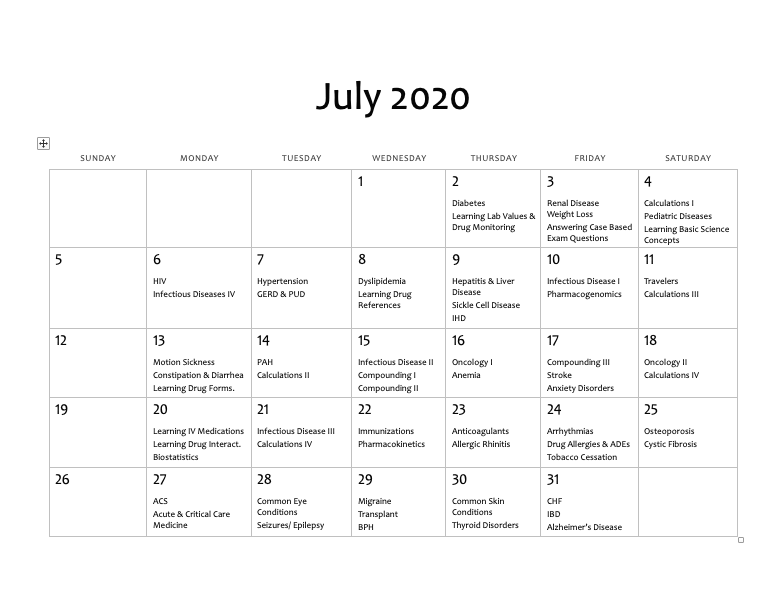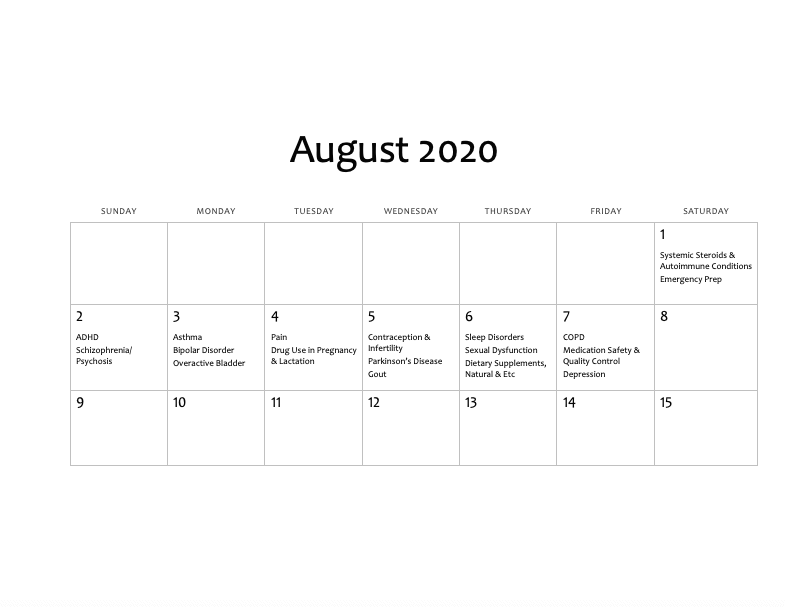Between the many emails, DMs, and comments, the NAPLEX is always a hot topic here at Uniquely Mickie, which totally makes sense as it’s the exam that allows pharmacy graduates to practice pharmacy. Two questions that I get pretty often are 1) how long should I study for and 2) what did your study schedule look like. While there’s no real shortcut or surefire way to make sure that you pass the NAPLEX, you can definitely improve your odds by creating a NAPLEX study schedule and sticking with it. In this guide, I’m sharing my exact NAPLEX study schedule that I used to study for the exam and give some advice on things you should focus on for your exam.
What is the NAPLEX?
For those that are new or are just getting started in the pharmacy world, the NAPLEX exam is the North America Pharmacist Licensure exam. For pharmacy students based in the United States, this is the licensure exam that allows you to practice as a pharmacist. You’ll also have to study and pass a law exam (also called the MPJE exam), which is different for each state that you want to practice in.
How long should you study for the NAPLEX exam?
Let’s first start off by saying that everyone is going to need a little bit of a different timeline based on your life circumstances and study routine. I personally recommend studying for anywhere from 6 weeks to 8 weeks as I found that to be a sweet spot for most test takers. When I was creating my NAPLEX study schedule, I studied for 6 weeks and used 2 weeks to review over any material that I wasn’t confident in. In my study plan, I was studying 2-3 chapters a day with an hour of math practice each day except for Sunday, which was my rest day.
What study materials should I use?
When I was studying for the NAPLEX exam, I used the RxPrep textbook and added on the quiz bank. I found that the RxPrep study materials overprepare you for the exam, which is personally never a bad thing in my opinion. I also used the McGraw-Hill’s NAPLEX Review Guide by Dr. Scott Sutton for more practice questions. You can buy this book online or you may have access to it through your university.
How to Make A NAPLEX Study Schedule
The first thing before you dive into studying for the NAPLEX is to come up with a plan that not only works for your schedule but is effective. It can be easy to follow someone else’s study plan or even the RxPrep study schedule, but if it doesn’t work for you, then simply don’t use it.
Here are some tips on how to make your own NAPLEX study schedule before I share mine with you:
1. Figure out how long you want to study for and schedule the NAPLEX exam
Many people, including myself, work better under a deadline. If you’re the same way, then go ahead and schedule your exam as soon as you’re allowed too. Test dates and locations can book up fairly quickly especially during the summer months when loads of other professions are also taking exams. Like I mentioned earlier, I would recommend scheduling your exam in a way that allows you to study for at least 6 weeks.
Some students may have to be licensed by a certain date for residency or a job, so you may want to take that into account when you’re scheduling as well. But at the same time, don’t feel pressure to rush to take the NAPLEX exam if you aren’t ready too. It’s too expensive to just be taking the exam all willy nilly.
2. Plan out your schedule based on your other obligations and responsibilities
Between residency obligations or working a pharmacy grad job, your schedule each day may look a little different. Make sure that when you are creating your NAPLEX study schedule to take into account any events and obligations that you may have during your study period. I recommend typing up your study schedule into a digital calendar, which gives you more flexibility in case you need to shift things around. It also makes it easy to cross things off when you’ve completed a chapter.
3. Make sure to add in rest days and give yourself grace when you need it
While some students go into hermit mode and spend all day studying, I don’t recommend this approach as you can leave yourself burnt out and depressed. Schedule in time to have fun, to relax, and to enjoy your free time to spend time with loves ones. A good habit to start is to create a healthy routine with your friends or family that gives you something to do every day that isn’t sitting in the house reading a textbook all day. It could be walking the dog around the lake, going on a coffee date, or even learning a new skill like knitting or embroidery.
4. Include time to do practice questions and to review any material
One of my previous professors gave me this advice that really helped me when I was studying for the NAPLEX, and it was to “practice like you’ll be tested”. The NAPLEX exam is a multiple-choice exam except for the math questions which are fill-in-the-blank. When you’re studying for the exam, pencil in time to practice answering practice questions and learning how to pull out pieces of information to guide you to the right answer.
Once you start doing this repeatedly, you’ll start to notice trends and pick up the small details that matter when answering questions. You’ll also want to make sure that you are leaving time to go back and review the topics that you aren’t the most confident in. When I was studying for the exam, I left open two weeks for review and to continue answering practice questions until I could sit still for hours at a time.
5. Don’t forget about the math section!
Math may be your strongest subject in pharmacy school, but I promise that you don’t want to leave the math sections to the last minute. On almost every exam, you can expect to have a version heavy with math. Some may be simple math while others may be a multiple step question. Personally, I think every student should practice math every day, but if you are good in math, then do it at least once a week for a few hours.
My NAPLEX Study Schedule
When I was creating my study plan, I wanted to give myself breaks between the more dense or difficult topics. As you review the study plan below, you may notice that some days on the plan are harder than others while the other days are on the lighter end. By doing this, it also gave me more time in between subjects if I needed to go over them again or needed to complete more practice questions in that specific subject. Every day that I was studying, I tried to schedule in an hour of math just to make sure I wouldn’t forget how to do anything on the actual exam.
You’d be surprised about how much you forget when you’re sitting in the exam room filled with anxiety and nervousness. Sometimes it feels like the simplest things go right out the window. The best advice that I’ve ever been given when it comes to studying for the NAPLEX is to practice math and other concepts until it becomes muscle memory. This way you don’t have to worry about forgetting the simple things on the actual test.
You may also like: Varsity Tutors Review: My Experience Using Them for the NAPLEX, 11 Study Tips to Help You Pass the NAPLEX, and 10 Tips to Survive Your First 12 Hour Shift








